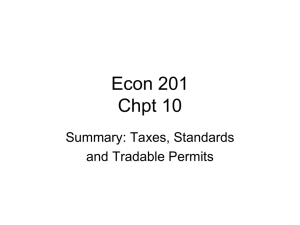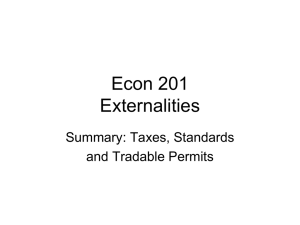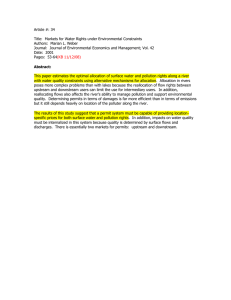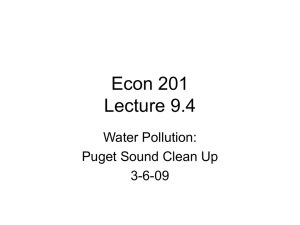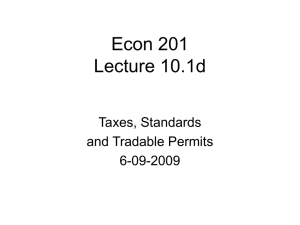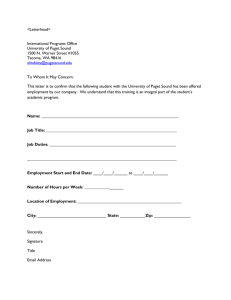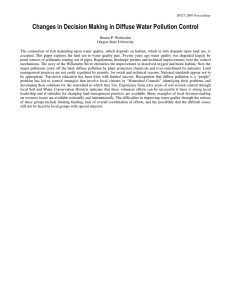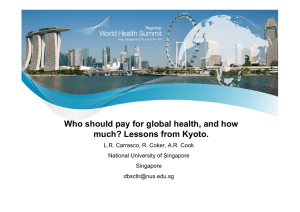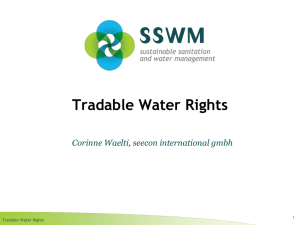Econ 100 Lecture 8.3 Pollution and Initiatives in the NW Summer 2009
advertisement
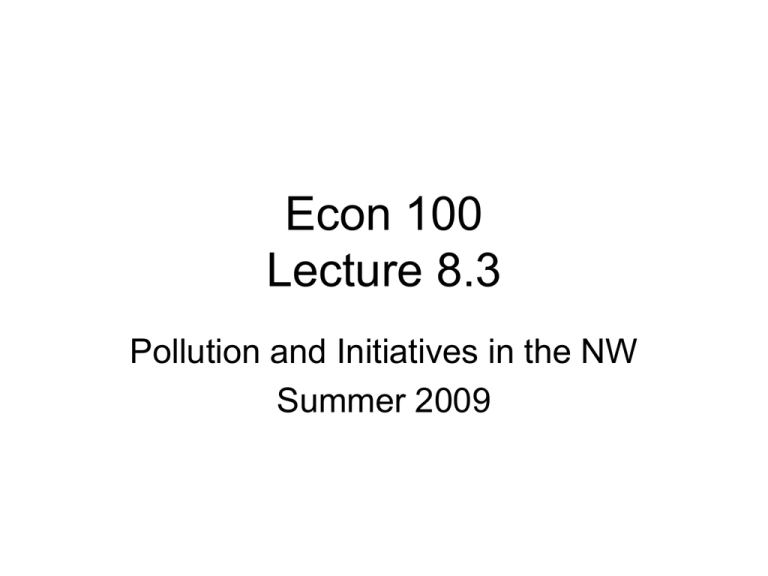
Econ 100 Lecture 8.3 Pollution and Initiatives in the NW Summer 2009 How Do We Get There? • Standards (command and control) – Set the overall standard at Q* – Calculate the amount of reduction necessary – Set uniform reduction goal for all firms • Taxes/Emission Charges – Set the tax = externality cost at the optimum Q* – Firms will internalize the cost • Tradable Permits (Coase) – Allocate right to pollute (Q*/N) – Allow firms to set price for trading permits Comparison of Approaches • Tradable Permits – Cost efficient • Firms will purchase permits from more efficient firms if permit cost < abatement (technology) costs – Technological incentive to reduce pollution • Marginal cost of abatement = permit cost – Similar to taxes – Administratively simpler • Require less information about the firms’ cost • Better able to handle “spatial” variation in pollution – Fewer permits auctioned in bad areas • Adjust “automatically” for changes in inflation and growth – E.g., Ca RECLAIM experience – If auctioned -> revenues for admin costs A Webinar on Tradable Permits • http://www.sightline.org/research/energy/re s_pubs/cap-in-trade-2009-sightlinewebinar Water Pollution Problems Types of Waste-Receiving Water • There are two general types of water bodies at risk of contamination from pollution. – Surface water includes rivers, lakes and oceans. Historically, clean-up policies have focused on surface water. – Groundwater is subsurface water. – Groundwater and surface water require different water policies. • Major issue with identifying source – Could set optimal level, but how to allocate? Western Climate Initiative (WIN) • Cap and trade program – Include BC, Washington and Oregon • Cap would be set for each state/province on Greenhouse gases at 1990 levels (Kyoto protocol) – CO2, CH4, NO, hydroflurocarbons, perfluorocarbons and sulfurhexafloride • Transportation, residential, commercial and industrial fuels – 25k metric tons of CO2 equivalent (annual) – 1 ton tradable permits – Start in 2012; reduce cap by 50% by 2020 Puget Sound Clean Up • Objectives – Reduce 150k per day pounds of toxic chemicals that enter Puget Sound daily • Over 2 years -> equivalent to Exxon Valdez spill – Acquire/restore prime marine habitats • Replace degraded shorelines, wetlands, estuaries – 40 major species have declined Puget Sound Clean Up Initiative • Governor’s proposal – Added $42M to already allocated $90M – Puget Sound Partnership • 10 person team of elected official, business leaders • Proposed actions – – – – – – $21M faster clean-up of pollution and shoreline $6.5M upgrade of septic systems -> into PS $4M for Parks to upgrade sewer systems $3M restore estuaries (wetlands) $2M to remove creosote logs $1.5M for oil spill and hazardous chemical clean-up, including storage Puget Sound Clean Up • What’s happening today – Port Gardner Bay Clean Up (9 sites) • • • • • • • • Oil, gasoline, diesel fuels, heavy metals Everett shipyard North Marina Baywoods Exxon/Mobil storage Weyerhauser East Waterway ASARCO (Arsenic)
